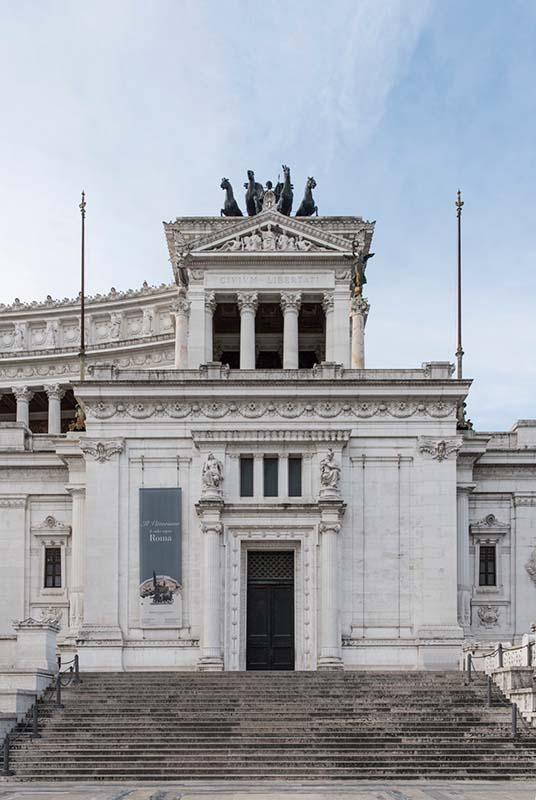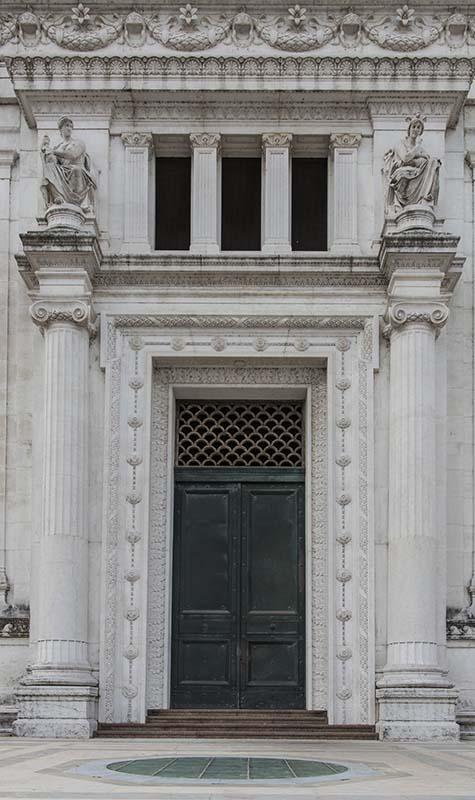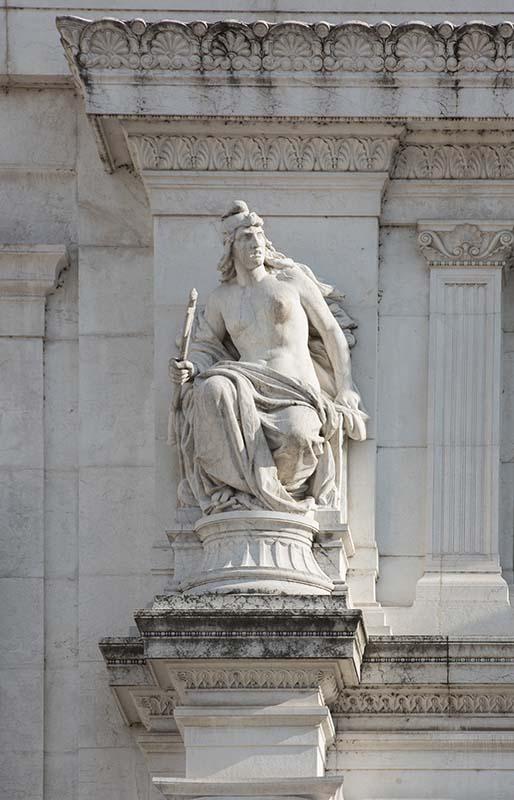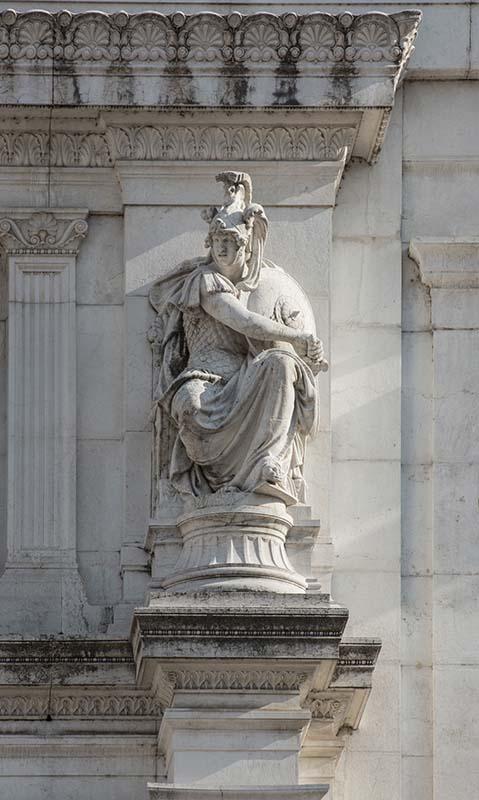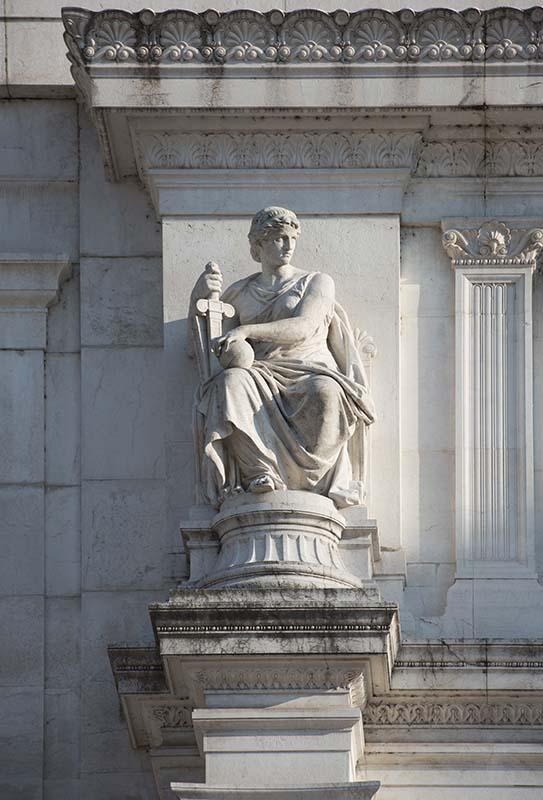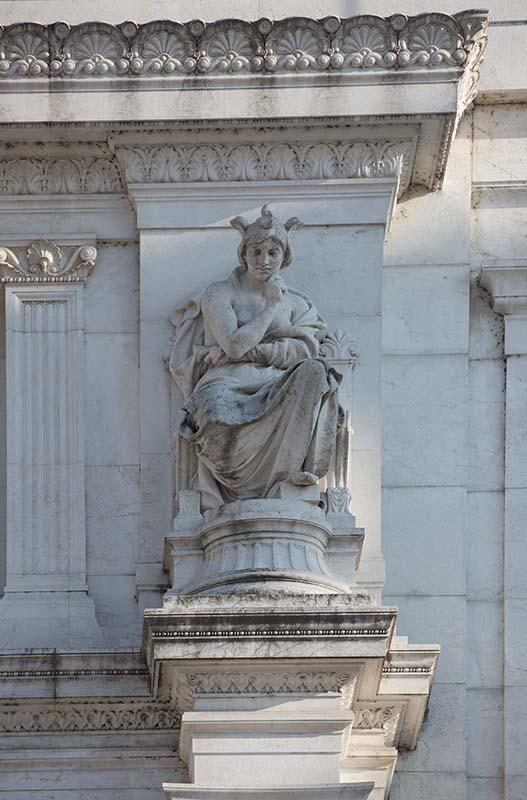The Doors of Liberty and Unity
The monumental entrances inside the Vittoriano are decorated with sculptures made under the direct supervision of Giuseppe Sacconi
The two doors open at the end of the flights of stairs that wind from the terrace with the Altar of the Fatherland. Originally their name was Doors of the Museums, as they gave access to the Vittoriano interiors intended to house the museums. Today the door to the west is known as the Door of Liberty; the door to the east as the Door of Unity, in honour of the two guiding values of the Monument.
Both have a rich system of frames carved in Botticino marble, with mouldings, fluted columns and capitals with Ionic volutes and bronze doors cast in 1914. Each door is decorated at the top with a pair of allegorical figures, made between 1900 and 1905 under the direct supervision of architect Giuseppe Sacconi. The bronze doors were cast in 1914.
The Door of Liberty has The Revolution on the left and The War on the right. The Roman sculptor Ettore Ferrari (1845-1929) depicts The Revolution as a naked woman with a Phrygian cap, her hair down and an axe in her hand, about to rise abruptly. Eugenio Maccagnani from Apulia (1852-1930) represents The War as a female figure sitting on a high-backed chair, with Roman military weapons, a lorica, which is the cuirass worn by Roman legionnaires, a helmet with a ridge and crest and a round shield known as a ‘Parma’.
The Door of Unity shows on the left The Politics and on the right The Philosophy. Nicola Cantalamessa Papotti (1831-1910) from Le Marche represents The Politics as a woman sitting on a Curule seat, of classical inspiration, and three attributes, the upside-down sword, symbol of strength, the globe and the book. The Philosophy by Eugenio Maccagnani is a female figure seated on a high-backed chair, with her breasts uncovered and her right hand on her chin. If you take a closer look at her hairstyle, you will notice two small wings, which symbolise freedom of thought.

